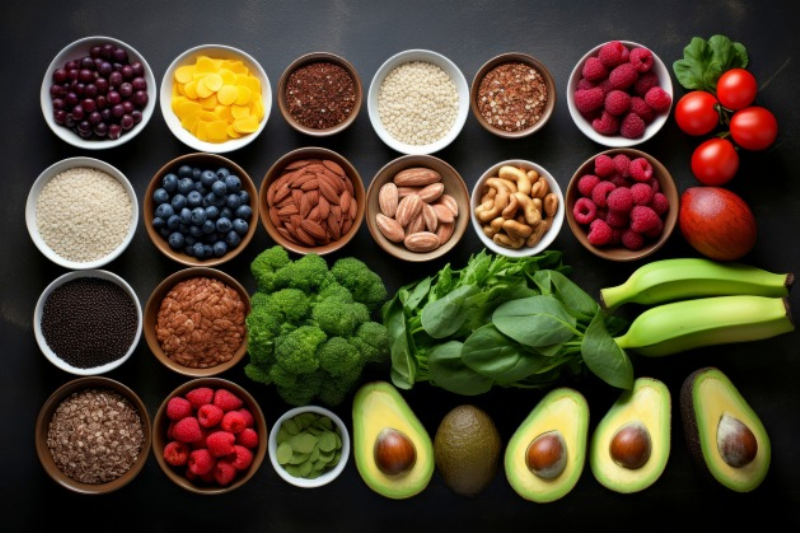- Tarique Rahman to Return Home With Daughter on Dec 25 |
- ILO praises Bangladesh’s labour reforms, new milestones |
- Depositors stranded as Sammilito Islami Bank is in liquidity crisis |
- BNP faces uphill task to reach seat-sharing deal with allies |
- Bangladesh rejects India’s advice; vows free, fair polls |
Unveiling the “Dark Matter” of Food, Diets and Biodiversity

Illuminating the dark matter in food and charting the intricate interplay between food, ecosystems, climate and health. Credit- Shutterstock.
By Maya Rajasekharan and Selena Ahmed
Jun 20 2024 (IPS) - This year, bee pollen has become a trendy superfood thanks to a wide range of potential benefits. Last year, sea moss led the superfood trends. Before that, it was turmeric.
Invariably, these newly celebrated superfoods are never new; they have long been consumed by non-Western cultures. The inadequate research on their nutritional composition and health attributes almost always leads to a list of exaggerated benefits, from preventing cancer to overall vitality and longevity. They become a fad for a few years and then often take a back seat to the next “superfood.”
Globally, half of all calories come from some form of wheat, rice or corn even though over 30,000 named edible species exist on our planet.
Yet the frequent emergence of trending superfoods demonstrate that food biodiversity persists in many communities and regions around the globe. In a recent publication in Nature Food, we joined 54 colleagues in beginning to capture and prioritize this diversity, with a curated list of 1,650 foods.
Strikingly, more than 1,000 of the foods on the curated food list are not included in national food composition databases — in other words, we don’t have easy access to what is in these foods, or science may not yet know what these foods contain. This suggests that dietary guidelines relying on national food composition databases miss the majority of humanity’s long and co-evolutionary history with food.
Moreover, even the foods that are commonly consumed and included in national food composition databases are barely understood. An estimated 95% of the biomolecules in food are unknown to science — this is the “dark matter” of food, diets and biodiversity. We don’t know what these biomolecules are, or how they function in ecosystems and in our bodies.
Mapping this dark matter is too large a task for any one laboratory, organization or country to achieve on its own. We need a united scientific movement, larger than the human genome project, with governments and researchers around the globe filling the gaps in our knowledge of the food we eat.
A suite of standardized tools, data and training is now available for this effort, which can build a centralized database based on standardized tools for researchers, practitioners and communities to share their wisdom and expertise on food and its diverse attributes to inform solutions to our pressing societal challenges.
Preliminary data from the first 500 foods analyzed reveals that many “whole foods” can be considered “superfoods,” with more unique than common biomolecules. Each fruit and vegetable, for example, has a unique composition of biomolecules that varies based on the environment, processing and preparation.
Broccoli, which achieved “superfood” status several years ago for its antioxidants and its connections to gut health, has over 900 biomolecules not found in other green vegetables.
We have identified the existence of these compounds through mass-spectrometry, but we have not determined the properties of these unique metabolites — we do not even have enough data to accurately name them, much less understand the roles that they play in our bodies and in ecosystems in the world at large.
And these 900+ biomolecules — broccoli’s dark matter — are in addition to the biomolecules that broccoli shares with other cruciferous vegetables, which may help prevent a wide variety of illnesses, from colon and other cancers to vascular disease.
Diet-related diseases such as diabetes, some cancers and heart disease are now the main cause of mortality globally. Yet the full scope of the links between diet and disease, soil microbes and gut microbes, climate change and nutrient content still remains shrouded in uncertainty.
Regulatory bodies are calling for more science to guide policy decisions even as scientists are finding new connections between diet and health for conditions as varied as macular degeneration and blood coagulation disorders.
The 20th century witnessed the simplification of agriculture, resulting in a narrow focus on yield and efficiency of a handful of cereal crops. Its successes were considerable, but they came at the expense of diversity, food quality and agricultural resilience. The superfoods — the trends, not the actual foods — are the collective poster child of this problem.
Now food systems are at a crossroads. The 21st century can become the century of diversity, as the new cornerstone of science on food. But we need help illuminating the dark matter in food and charting the intricate interplay between food, ecosystems, climate and health.
As we call for a globally coordinated effort to fill the gaps in the food we eat, we need to ensure these efforts do not create scientific disparities between countries and regions.
We need capacity-strengthening efforts so that all countries can equally and inclusively participate and benefit from the knowledge of what is in our food, how it varies, and implications for the health of people and the planet.
It is not enough to borrow superfoods from non-Westernized cultures and give them nothing in return. Today, it is time to start opening the black box of food and create more nourishing food systems for everyone.
Selena Ahmed is Professor at Montana State University and Global Director of Periodic Table of Food Initiative (PTFI) at the American Heart Association
Maya Rajasekharan is PTFI Director of Strategy Integration and Engagement at Alliance of Bioversity International and CIAT

